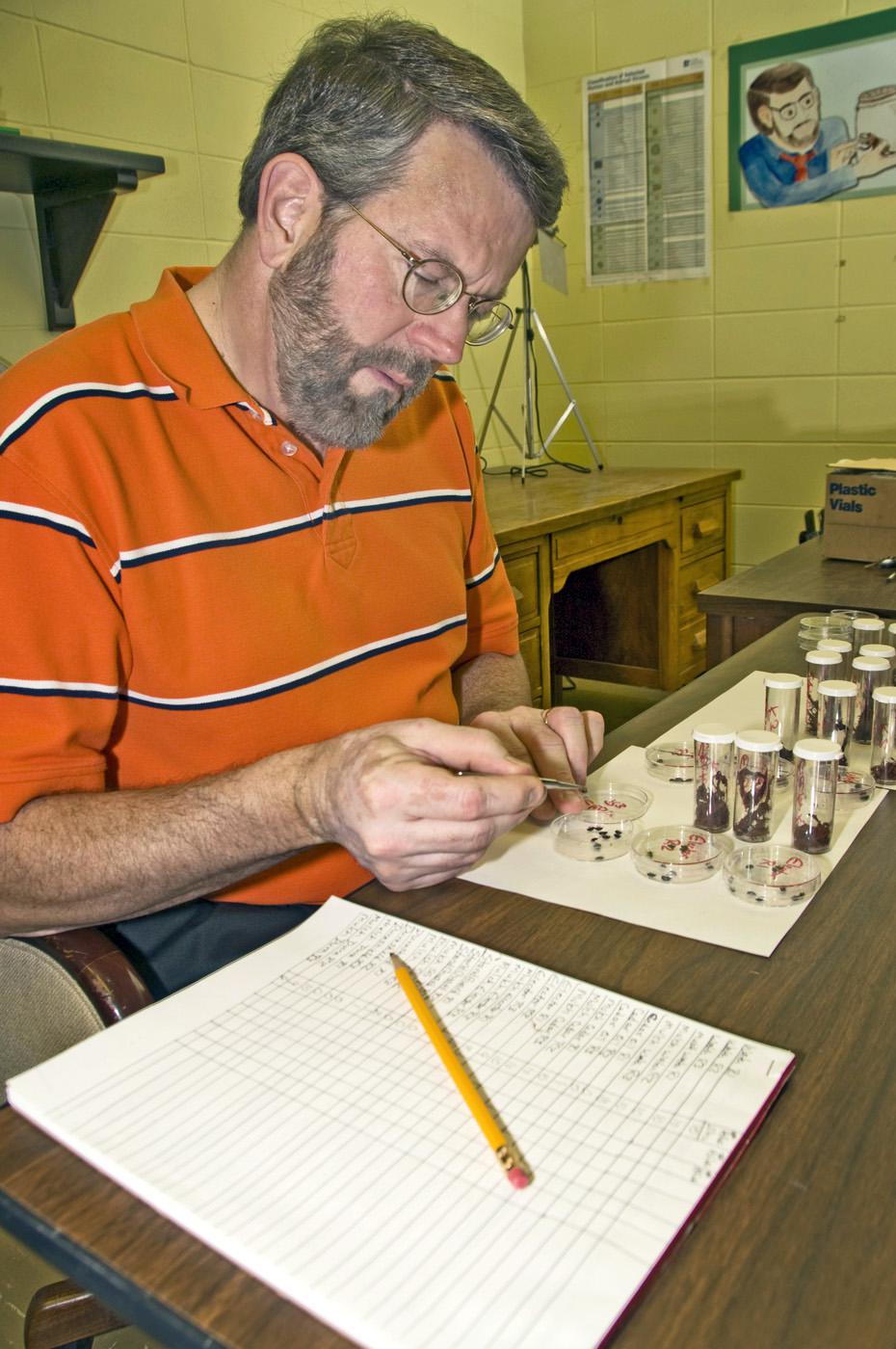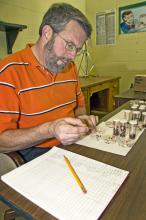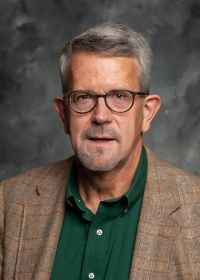Information Possibly Outdated
The information presented on this page was originally released on February 5, 2009. It may not be outdated, but please search our site for more current information. If you plan to quote or reference this information in a publication, please check with the Extension specialist or author before proceeding.
Renowned medical entomologist returns to MSU with new ideas
By Patti Drapala
MSU Ag Communications
MISSISSIPPI STATE -- Jerome Goddard left his mark on Mississippi State University in 1984 when he graduated with a doctorate in medical entomology, and now he is back to reclaim it.
Nearly a quarter of a century ago, the Booneville native inscribed “Jerome Goddard was here in 1984” on the inside edge of a laboratory door in the Clay Lyle Entomology Building. After a career as a medical entomologist with the United States Air Force and the Mississippi Department of Health, Goddard accepted a position with the MSU Extension Service last October as associate professor of medical and veterinary entomology.
While Goddard finished unpacking in his new office, a colleague reminded him of the inscription. He headed down the hall to examine the door.
“The tiny, tiny inscription I wrote was still there,” Goddard said. “That immediately let me know I have come full circle to a place that I have always loved.”
Since his childhood, Goddard has been comfortable working with living creatures that unnerve many people, such as mosquitoes, spiders and ticks. While many insects and arthropods are relatively harmless, a few are vectors for organisms that can cause disease in humans and animals. If vector populations increase, they can overwhelm the ability of communities to protect the public health.
This scenario fascinated Goddard and motivated him to pursue an education in public health entomology. He earned his bachelor's and master's degrees in biological sciences from the University of Mississippi before heading to MSU for his doctorate.
One of Goddard's major professors at MSU was Bev Norment, a medical entomologist conducting research on ticks carrying the bacteria that cause Rocky Mountain spotted fever. Influenced by Norment's enthusiasm, Goddard developed an interest in the ecology and epidemiology of tick-borne diseases.
“Not everyone is willing to work with ticks, but Jerome was that type of special person,” Norment said. “I could always depend on him to follow through on his research and writing commitments, and he enjoyed what he was doing.”
After earning his doctorate, Goddard enlisted in the U.S. Air Force to gain a global perspective in dealing with public health issues. He arrived at Brooks Air Force Base in Texas in 1986 to begin work as a medical entomologist with the Epidemiology Division of the USAF School of Aerospace Medicine. The military hires medical entomologists to provide expertise when soldiers and auxiliary civilian staff encounter exotic pests and pathogens.
“In wars, more casualties come from vector-borne illness than from bullets,” Goddard said. “Medical entomologists who work in the military have to be familiar with almost all bugs that can threaten public health, not just the local pests, because our troops are stationed in all parts of the world.”
While Goddard enjoyed his three and a half years of military service, he wanted to advance in a new direction when his commitment ended. In 1989, Goddard became a medical entomologist for the Mississippi Department of Health.
“When I interviewed for the job, I told my bosses that medical entomology was like a parachute. You may not often need it, but when you do, you really need it. I assured them I would take care of everything, and it was a wonderful experience during the 20 years I worked there,” he said.
Goddard had the freedom to build his own program in public health entomology and focused on educating the public, providing medical knowledge and encouraging research. The medical community considers ticks and mosquitoes the top two pests that can adversely affect public health. Disasters, whether natural or manmade, often can complicate problems.
When Hurricane Katrina ravaged the Gulf Coast in 2005, government officials moved quickly to devise a vector abatement plan. Goddard, who had built a strong public health program, was instrumental in making the plan work.
After a hurricane, buildings lie in shambles, water sits around and debris piles up. These conditions are ideal breeding grounds for mosquitoes, flies and other vermin. Displaced citizens, first responders and triage personnel are susceptible to these pests. This was the problem Goddard faced after Katrina.
“The basic issues of pest control, clean water, sewage, communication and power sources that we take for granted become problematic. Controlling the spread of disease becomes extremely important,” he said.
Goddard assisted the Federal Emergency Management Agency in implementing aerial spraying over Hancock, Harrison and Jackson counties to control the mosquito crisis.
“The aerial spraying reduced mosquito numbers by 95 percent in one night,” he said. “We discovered aerial spraying over a wide area can quickly knock down a vector pest.”
Now that he has returned to MSU, Goddard will focus on education, training and outreach in his role as a medical and veterinary entomology specialist with the MSU Extension Service.
“The Extension program has needed a person with expertise in medical and veterinary entomology for many years,” said Extension entomologist Blake Layton. “We have a significant poultry and beef industry in the state, and we fight a continuing problem with West Nile virus every year.”
Goddard said he hopes to teach a medical entomology class, reach the public with articles and books, and conduct research on medical and veterinary pests. He also said he plans to conduct workshops and training for Extension personnel with public health responsibilities.
“Working with municipalities to improve mosquito control is an example of the outreach I intend to do as an Extension specialist,” Goddard said. “Good control is more than just driving the spray trucks up and down the street. Pest control can be immediate, effective and efficient if communities work together with the experts in understanding the scope of public health.”
Goddard is ready to make another mark on MSU.




